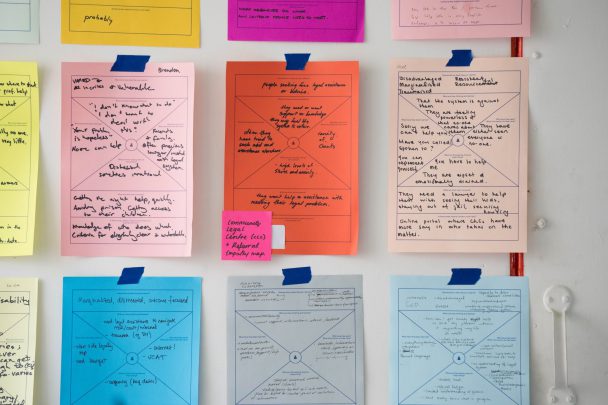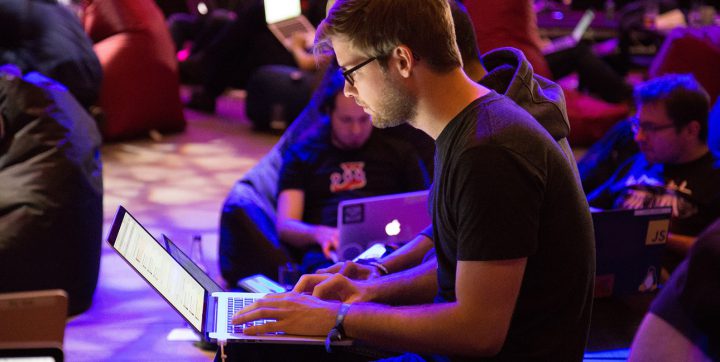Design Thinking is a structured approach to innovation that places the focus on the human being and seeks to generate solutions that align the desire and needs of the consumer/user with the generation of value for the business.
1. What is Design Thinking?
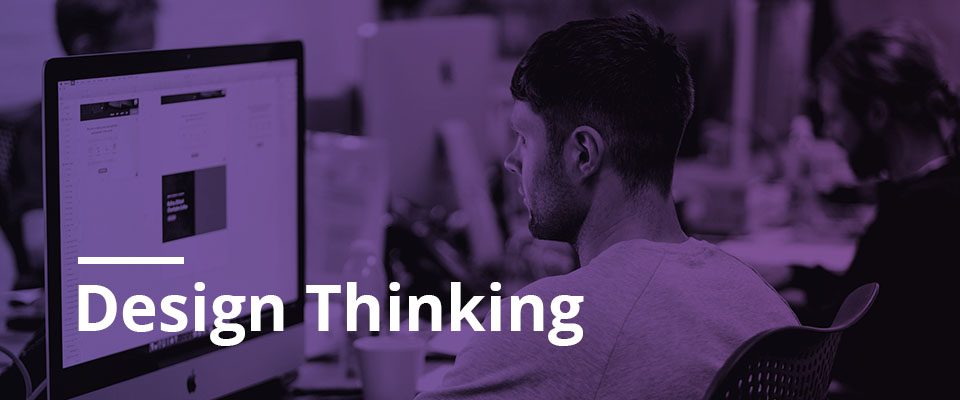
Design is often associated with aesthetic appearance, but its real purpose is to promote well-being in people’s lives. Therefore, the way designers perceive the world around them and act on it has caught the attention of managers, opening new paths for business innovation.
The designer sees everything that impairs or prevents a good experience (emotional, cognitive or aesthetic) and the well-being in people’s lives as a problem, taking into account aspects such as work, leisure, relationships and culture. The main task of the designer is to identify this type of situation and generate solutions.
He understands the diverse nature of these problems and knows that in order to solve them it is necessary to map the culture, contexts, personal experiences and processes in individuals’ lives to gain a holistic view of the difficulties and generate alternatives to overcome them. By investing efforts in this mapping, the designer can identify the causes and consequences of the difficulties and be more assertive in the search for solutions.
In order to identify the real problems and solve them more effectively, you need to approach them from different perspectives and angles. Thus, it prioritizes the collaborative work among multidisciplinary teams, which bring diverse perspectives and offer different interpretations on the subject and, thus, innovative solutions.
In addition, as the name suggests, Design Thinking refers to the designer’s way of thinking, which is rather unconventional in the business environment – abductive thinking. This method consists of formulating questions through observation or understanding of the phenomena. That is, questions are asked to be answered with the information collected during the observation of the universe that permeates the problem. Thus, by thinking abductively, the solution does not come from the problem: it fits into it.
You cannot solve problems with the same kind of thinking that created them: challenging business rules is the basis of Design Thinking. By thinking abductively, the designer constantly defies his own standards, confirming and refuting conjectures. It is this ability to get rid of the preconceived truths that enables the designer remain “out of the box”.
2. Why is it important for your company?
Design-driven innovation emerged in the business world to catalyze the market view that in order to innovate it was necessary to develop or integrate new technologies, focusing on widening the performance spectrum.
In addition to these technological and marketing factors, the Design Thinking process allows companies to innovate mainly through the attribution of new meanings to products, services or relationships.
The Design Thinking method enables the creation of innovative business ideas in a systematic and organized manner, offering a new way of thinking about problem-solving, bringing the user to the center of the discussion. Knowing their desires, needs and concerns, the methodology proposes more assertive solutions to the end customer and that add value to the business.
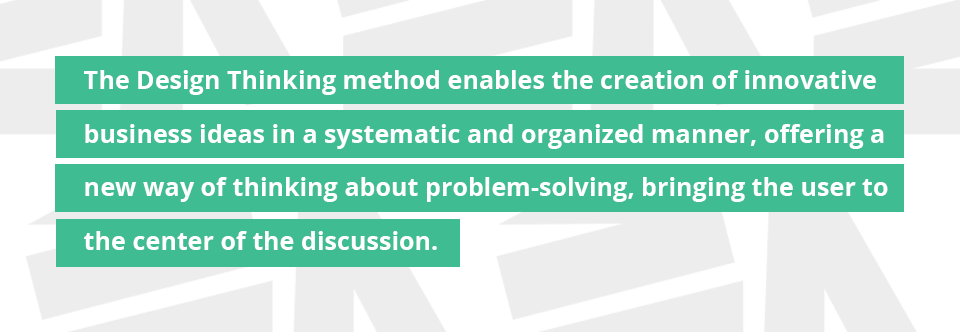
What makes Design Thinking so effective is its human-centered approach. Through a process structured in different phases, this method leads to transformation in companies, helping create a culture of innovation, the engagement of its teams, the development of more assertive projects and greater cost-benefit relation in the development of a product/service.
3. What is the purpose of Design Thinking?
The market is changing at all times and companies need to be prepared for new organizational challenges and different meanings for products and services.
In addition to helping in the process of adaptation, the innovation promoted by Design Thinking offers a holistic view and indispensable tools in the identification of opportunities and risks.
Design Thinking is the value proposition of the application of creative thinking in the context of business. It is a new market practice that discusses and combines innovative solutions through the premise that you cannot solve a problem with the same reasoning that created it.
The methodology confers important values for the creation of a culture of innovation, such as collaboration, empathy, co-creation, tangibilization and testing. Design Thinking can be used in any business context and serves as a catalyst for other approaches, such as Agile, Lean Start-up and Gamification.
Download the book Design Thinking: Innovation in Business and learn how to transform your business
Subscribe to receive our updates
Fill the form to receive our freshest content
4. Design Thinking Process
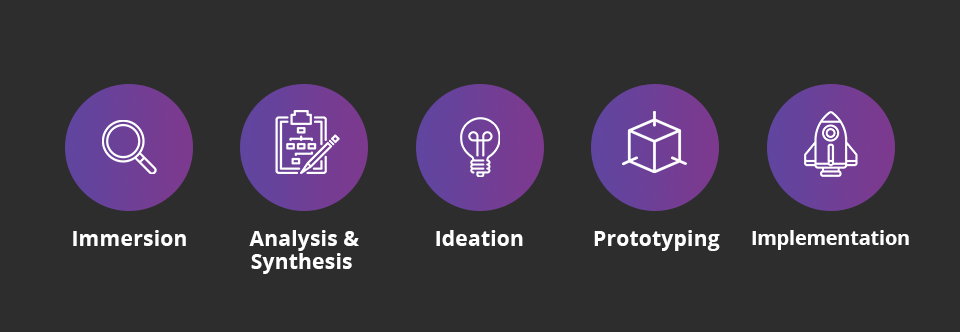
A Design Thinking project involves gathering information about real end-user issues, understanding their journey, and proposing tangible solutions. The process is divided into five stages: Immersion, Analysis and Synthesis, Ideation, Prototyping and Implementation.
First, there is a contextualization research of the problem defined by the company’s stakeholders, the collection of data and the formulation of hypotheses. Next, there is the analysis of the data collected and the reframing of the initial situation based on the transformation of this data into relevant information.
The third step is the organization of collective brainstorming sessions and the use of tools to create innovative solutions. Next, test periods are carried out to validate the value of ideas for the final customer.
At the end of the process, ideas are refined and implemented, making sure they are apt to be developed. Check out the detailed Design Thinking process stages below.

Immersion
Analysis and Synthesis
Ideation
Prototyping

Implementation
5. Design Thinking Tools
It is the preliminary field research that helps the team understand the context to be worked on and provides inputs for the definition of the profiles of users, actors and environments or moments of the product/service life cycle that will be explored in the In-depth Immersion.
The Exploratory Research also facilitates the familiarization of team members with the realities in which the products and services will be used and helps elaborate the subjects to be investigated in the Desk Research.
Desk Research is the search for information about the theme of the project in various sources such as websites, books, magazines, blogs, articles, among others. The term “Desk” comes from desktop and is used because most secondary research is currently performed based on secure internet references.
Created from a tree of themes related to the project, the research is used to obtain information from sources other than the users and actors involved directly in the project.
The interview is a method for obtaining information through dialogue, which can be supported by other tools of the Design Thinking process. The reports sought to permeate the researched subject and the central themes of the interviewees’ lives.
The activity is particularly useful to understand the interviewee’s life experiences, as well as their opinions and behaviors. The interviewer must encourage the participant to explain the whys of the answers so that he can understand the full meaning of what is being said.
The interviews follow a predetermined protocol, which can be flexible according to the conversation. By delving into the points of view of the interviewees, it is possible to identify polarities and similarities, as well as their origins and consequences, assisting in the development of Personas and providing inputs to the Ideation stage.
To further explore the interview reports, it is common to use observation tactics and instruments to elicit actions, such as archeology of facts and cultural evocation cards, respectively.
Awareness Booklets are tools used to obtain data, usually when the user is physically distant. One of the best aspects of this is its little interference while the actions taken by the subject are recorded and its greater privacy in more sensitive matters.
These booklets are also widely used in Generative Sessions, allowing for greater intimacy with the subject during the exchange of experiences.
Here, the researcher simulates the life of a person or a situation being studied. In this activity, team members can gain insights by experimenting with situations they would not normally experience.
By placing the researcher in the place of his object of study for a certain period (which can last more than a day), the activity generates empathy between the parts and allows the professional to interact with other contexts and points of view.
Generative Sessions are meetings in which project stakeholders are invited to carry out activities together in which they present their views and share experiences on the matters of the project. Days prior to the sessions, Sensitization Papers are distributed so that the participants feel more comfortable with the topic. The approach allows the observations made during the ethnographic interviews to be enriched.
The Shadowing technique involves following a user (or other actor of the process) over a given period that includes their interaction with the product or service being analyzed.
The aim of the activity is to understand how the person being followed relates to the context studied, their emotions, expectations and habits. Here, the researcher should not ask or interfere in the context, but rather register the process discreetly, taking notes, photographing or filming.
Insight Cards are considerations made based on real data from the Exploratory, Desk and In-Depth researches which are transformed into cards to make consultation easier. It usually contains a title that summarizes the finding and the original text collected in the research.
They can help create the Affinity Diagram to identify patterns and relationships of the data. It is used at various times in the Immersion stage, either to record key findings from a Desk Research or to decouple important information from the In-Depth Survey.
The Affinity Diagram is created after the Insight Cards are organized, analyzed and grouped based on assumptions such as affinity, similarity, dependency or proximity. This creates a diagram that defines the macro themes to be worked on.
The Affinity Diagram tool is important when reviewing and organizing annotations. It can be done collaboratively and serves to identify the areas of greatest opportunity for a project.
Information can be rearranged as many times as necessary, but it is important to keep records of each version of the diagram to help understand the subject and make the evolution of reasoning more tangible.
Conceptual Maps provide a simplified visual organization of complex field data at different levels of depth. The purpose of a Conceptual Map is to illustrate the connections between the data, enabling more linear reasoning and allowing new meanings to be extracted from the information.
They are guidelines about elements that should be constantly reinforced during the development of a project. These criteria serve to determine the limits of the tasks, maintaining the proposed focus.
They usually arise from the analysis of the information collected during the Immersion stage. Having Guiding Criteria enforced on the project ensures the identification of the issues necessary to tailor the solution.
The Empathy Map is an array that synthesizes customer information about what they say, do, think, and feel. The tool is used when there is a lot of field information and it is necessary to better understand the target audience.
Mapping serves as the basis for identifying needs and opportunities for the project. The Empathy Map is divided into six areas, which must be filled based on the following questions about the client:
- What does the client see?
- What does the client hear?
- What does the client really think and feel?
- What does the client do and say?
- What are the client’s difficulties?
- What are the client’s achievements?
Personas are fictitious archetypes that embody brand values. They represent the perspective of the ideal client and are conceived from the synthesis of similarities and polarities in the behaviors observed in a given group.
The construction of personas must be accompanied by stories to illustrate the needs of this fictitious user and contain information such as age, gender and a description of their behavioral profile. You can find a practical case where personas were created to emulate a hospital’s chronic patients in our site.
Buyer Personas are useful, real and detailed profiles about the loyal customers of a product or service. Since they are true representations, Buyer Personas can assist in more strategic activities for the business, such as content targeting, functionality improvements and usability of applications, sites and systems and in the customization of e-mail marketing, among other benefits
The User Journey is a graphical representation of the stages of the relationship between users and products or services. The tool visually portrays the flow of interactions and is useful for understanding customer reactions to unexpected situations, such as possible usability failures.
The User Journey should be a detailed step-by-step map of the customer relationship cycle with the company, before, during and after the user’s interaction with the product or service.
It can be used alongside the Personas or Insight Cards, as this example application of a journey to purchase a capitalization bond.
Download our Ebook – User Journey Guide: How to build enchanting digital experiences
The Blueprint is a schematic visual matrix, which simply represents the entire system of interactions that characterize service delivery. Here, we map the different points of contact of the service and the actions that the clients have with them, from the visible operations to those that occur ‘behind the curtains’.
The use of a Blueprint is recommended when you want to visualize the service in all its aspects to find improvement points and new opportunities. The tool describes the physical evidence of the problem, the different actors of the interactions and the interdependencies along the journey, facilitating the identification of faults and overexposure of clients.
To reframe is to examine unanswered questions in a company from different perspectives, allowing the deconstruction of beliefs and assumptions about a business, product, or service. It is considered to be the first step in building innovative solutions.
This is done in cycles of reframing, which are repeated until those involved in solving the problem can see the question through multiple prisms. The cycles are divided into capturing, transformation and preparation.
During the capturing cycle, data on a stakeholder’s believes or assumptions regarding the product/service/company is collected. Information acquired at this stage will be proven or discarded after processing.
In the transformation cycle, the project team maps the collected information and adds new perspectives. In this part, it is common to use mind maps and journeys, depending on the purpose.
Finally, preparation is the moment where awareness material is created. This material will serve to encourage the interlocutor to use thoughts different from those that created the problem to solve it.
Brainstorming is a creative process that seeks to stimulate the generation of a large number of ideas in a short space of time. It is usually conducted in a group and led by a moderator responsible for allowing the creativity of those involved to be stimulated without letting the focus be lost.
In order to generate opportunities for creative solutions, it is common for the group to participate during the Immersion stage, as well as the use of data, such as Personas.
The process of generating ideas contains a set of general rules to potentiate the process. They are:
- Quality through quantity;
- Avoid judging ideas;
- Bold ideas are welcome;
- Combine and hone ideas;
The Co-creation Workshop is a collaborative meeting held by the Design Thinkers team that brings together individuals from different fields to foster innovative solutions. The guests are always stakeholders with some type of involvement in the problem to be solved, and they may have direct or indirect participation in the process.
The workshops are a very useful tool in validating the ideas of a team that is not necessarily involved in the day-to-day of the project, but that can contribute decisively to its progress, such as having professionals present only during the User Journey.
You can find material in our blog explaining who to invite and when to organize a co-creation workshop, as well as tips on how to organize the meeting in order to give fluidity to the activity.
The Idea Menu is a catalog that synthesizes all the ideas generated in the project, making them tangible. The end result resembles tactical implementation actions present in a marketing plan.
The menu almost always includes comments on ideas and their outcomes, and the result can be printed in card format to make ideas tangible in meetings, workshops, and project presentations.
It is the strategic analysis of the validation of ideas generated to solve a problem. The matrix communicates the benefits and challenges of implementing each solution so that the most strategic ideas are prioritized at prototyping.
The resource is often used when the volume of ideas is too large to be done simultaneously or when some complement others. To formulate a Positioning Matrix, the ideas generated in co-creation workshops are listed and then grouped by criteria such as urgency or ease of implementation. The matrix can be crossed with other tools to generate more assertive solutions for the user.
Brainwriting is a meeting that resembles Brainstorming, but it is held before the creative discussion begins. Everyone is supposed to write their ideas anonymously on pieces of paper that will be scrambled. The technique allows introverted professionals or employees in positions in the business hierarchy, such as interns and trainees, to have creative equity. The goal is to build a solution together.
There is yet another version of Brainwriting, in which participants write their insights on sheets of paper over a predetermined period and, at the end, they exchange their sheets. In this dynamic, it is possible to complement the ideas of the other participants.
These are simple representations of graphical interfaces with different levels of fidelity, but they are drawn by hand and seek to make an idea tangible. They are widely used when it is necessary to create a digital solution that has multiple interaction mechanisms or complex interaction flows.
In our post on Paper Prototypes in Design Thinking, it is possible to see practical examples of the use of this tool and the possibilities of the results achieved with it.
A Volumetric Model is a three-dimensional representation of a product with various levels of fidelity, and it is used to get an idea out of its conceptual existence and transform it into something concrete.
You can find a post in our blog that shows a case study where employees of a company had difficulty communicating ideas. The solution involved a volumetric model representation called the analog iPad. Check it out!
It is an impromptu simulation that can represent interactions between people and objects, or dialogues in which certain roles are assumed, with the purpose of testing, building or detailing the steps of a procedure to improve the experience of a service.
Storyboards are visual representations of a story through static frames. They work as visual scripts and can be created with drawings, collages, photographs or any other type of graphic representation technique.
The tool is well known in the audio-visual context and is used to visualize the threaded procedures of a solution. In order to build a good storyboard you need to have a clear idea of what you want to communicate first, building a written script and then separating the story into sections.
With the storyboard, it is possible to identify open points in a product flow or to refine an end service.
A Service Prototype is the simulation of material artifacts, environments or interpersonal relationships that represent the aspects of a service, so as to enlighten the user in the context of the proposed solution and explain how the service would ideally work.
The Minimum Viable Product is a concept derived from the Lean Methodology, which is well known in the business world and consists of developing the simplest possible version of a product, service or functionality to obtain market validation of its value proposition.
The Minimum Viable Product, as it is also known, should not be confused with an object, device or system without functionality. Its purpose is to test the potential of the main ideas of a project and get its approval from a particular audience before investing in more functional cycles or a seductive layout.
6. Agile and Design Thinking
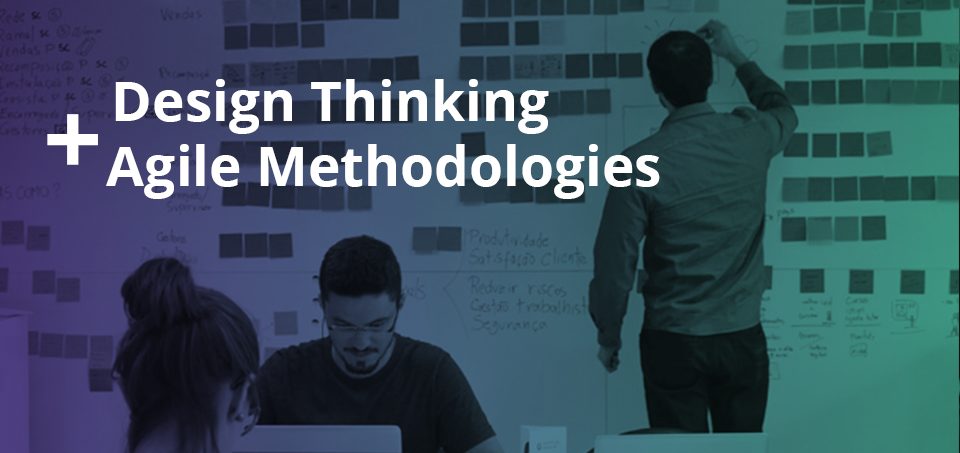
The world is in the process of transformation. Technology is evolving faster and companies need to adapt to changing times as the business models before them are abruptly threatened by emerging products and services.
In general, traditional business approaches consist of identifying market opportunities whose solution involves the development of new software or the increment of an existing one.
However, the traditional way of developing digital solutions is increasingly diverging from the market expectation of a more agile, collaborative process that meets the real needs of the consumer. And to keep pace with this dynamism, it is necessary to change.
The good news is that the number of companies that already understand the importance of focusing efforts on user experience and optimizing internal processes is increasing. And in the constant search for new innovation strategies, the union between Design Thinking and Agile Development comes with the proposal to increase the productivity of the team to continuously deliver solutions with high market value.
In practice, using the two approaches together enables you to learn from the user, continually test and improve the end product, adding innovation to deliverables and creating more assertive technology solutions. But there is more. The combination of Design Thinking and Agile Methodologies helps align the organizational culture of the company with the business dynamics that the current market demands.
7. Business Intelligence and Design Thinking
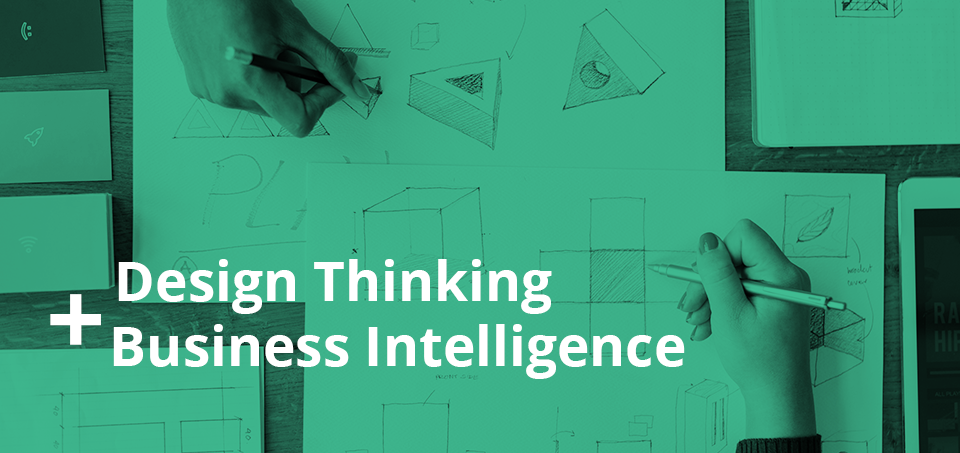
The evolution of digital media happened very quickly, from the emergence of the computer to the boom that led to the current scenario of almost omnipresent technology. Just realize that our smartphones have a greater capacity of data storage than the best computers of the past decades.
This means that more and more data is stored every second on the Internet. Nowadays, individuals and organizations leave unavoidable “digital footprints” wherever they go. And this universe goes beyond the websites and social networks, accessed through our computers, tablets and smartphones.
The so-called Internet of Things is also evolving at high speed, causing profound changes in the business world and the experiences of individuals. Televisions, refrigerators, clocks and even glasses are already developed as intelligent devices, connected and capable of storing and transmitting data. In addition, they record habits and information for the market. After all, the more knowledge the company has about its customers, the more it knows its business.
Predicting consumption trends is a huge task. That is why this huge volume of data represents an opportunity for companies to be able to refocus their efforts to ensure business success by making decisions based on reliable information.
Data Trail
In the course of its activities, a company generates and collects a lot of information, which generates the necessary data to identify the aspects that need to be changed and those that must be kept. This data is the work material used by the Business Intelligence process.
The so-called B.I. is the process where business information is extracted, through various techniques, in order to find improvements to the decision-making process of the company. This, it is crucial that the company keeps its database organized. The database tells the company’s history, its problems and its qualities.
Applying B.I. in business
The need to apply Business Intelligence comes at a time when the company needs to better understand what to do with the data obtained. It is important, however, to understand that B.I. goes beyond the relationship between the company and its consumer. This methodology integrates information from all sectors of the company to generate solutions to internal conflicts and business management, whether with respect to employees, customers or suppliers. In other words, it covers the entire business chain.
B.I. + DT: Design Thinking as a complementary approach
The focus of Design Thinking, the human aspect and the users’ needs, fits perfectly with B.I., because it is a powerful methodology, based on qualitative analysis and focused on the empathy with the public of a product or service.
The opportunity to reinvent its management model is, first, to admit that old solutions do not solve new problems. In order to meet this need for process innovation, the combination of Business Intelligence and Design Thinking presents a complete path from data collection to testing ideas and implementing actions.
The combination of Business Intelligence and Design Thinking reaches an unprecedented level of understanding of corporate realities. And it does this by incorporating the subjective factors of the human relationships involved in the equation. The mix results in the ability to combine numerical data with the social context.


